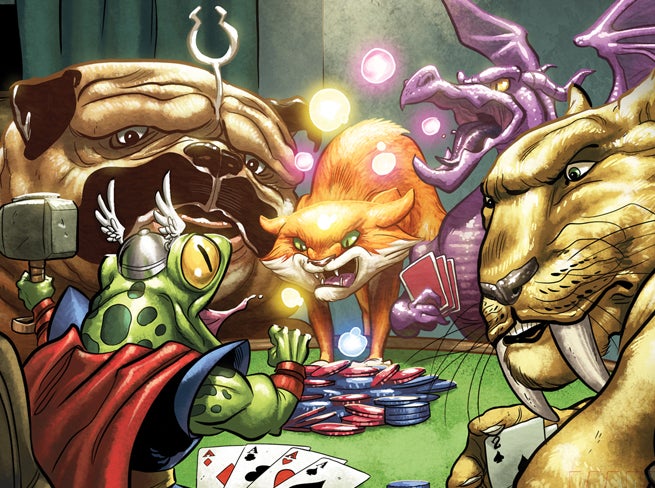
It’s been a great month for animals in the comic book world. This weekend, Teenage Mutant Nina Turtles, starring everyone’s favorite “heroes on a half shell” opened in theaters, one week after Guardians of the Galaxy, which co-stars a machine gun-toting, talking raccoon named Rocket, became the highest grossing August film in history (and don’t forget about a certain fowl-feathered cameo in the Guardian’s mid-credits teaser which set the world on fire this past week).
Videos by ComicBook.com
This animalistic hot streak doesn’t stop at the cinemas. In the world of comics, an issue of Hawkeye, told exclusively from the point of a view of “man’s best friend” received an Eisner Award last month for “Best Single Issue.”
If you’re still not convinced about the power of animal magnitude in the current comic-verse, then perhaps you need to tune in to the CW’s The Flash in October when a certain gorilla-turned-super-villain is expected to make an appearance as a featured antagonist for the “Scarlet Speedster.”
So let’s take stock and rank the mightiest comic book animals in all the land. This list is looking at the character’s mainstream recognition, longevity and overall relevance as part of the pop culture zeitgeist. Please refrain the bearing of claws or gnashing of canines if your favorite animal friend has been excluded.
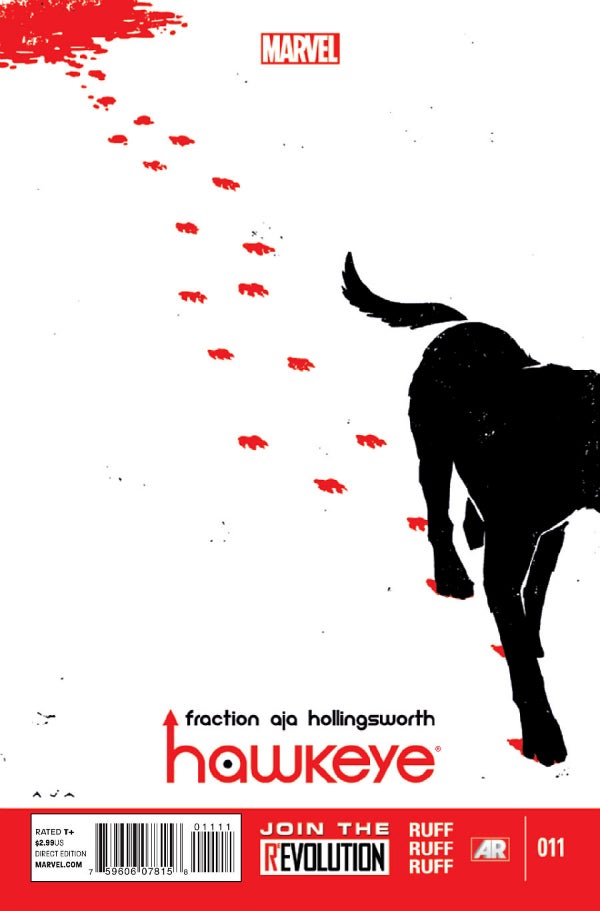
10. Pizza Dog
Since he was first introduced in Matt Fraction and David Aja’s Hawkeye #1 in 2012, “Pizza Dog,” who actually goes by the name Lucky, has been a key part of the critically acclaimed series. Rescued by Clint Barton after being brutally beaten by the Tracksuit Mafia, Lucky became a star in his own right last year when Fraction and Aja made the bold choice to tell Hawkeye #11 exclusively from the dog’s perspective.
Hawkeye #11 ended up being one of the most visually inventive comics to ever be published, as Aja and Fraction told a masterful story using mostly images and icons with a only a few choice words and phrases (i.e. things a dog would understand like “Kate,” “stay” and “good boy”). This unique approach makes the comic perpetually re-readable, as there’s always something new to discover about how the creative team depicts Lucky’s senses of sight, smell and hearing. And the issue was justly rewarded with an Eisner Award last month for “Best Single Issue,” which means Hawkeye #11 will likely have an industry legacy as an all-time great comic for years.
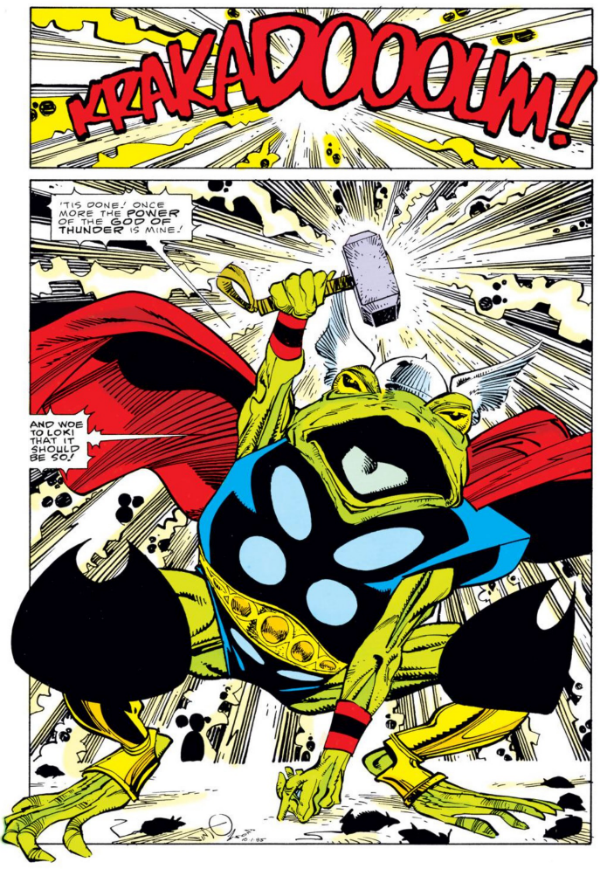
9. Frog Thor
In a storyline that probably sounded patently absurd in a pitch room, but worked oh so masterfully in comic book form, during Walt Simonson’s acclaimed Thor run in the 1980s, the God of Thunder was magically transformed into a frog by his half brother Loki.
What makes this storyline (as found in Thor #364-366) so sublime is how once the initial shock (and subsequent giggling) of seeing Thor as a frog wears off, the reader is left with a riveting story about a hero overcoming tremendous odds to prevail. During the arc, Thor needs to find a way to get back to Asgard before Loki claims Odin’s vacant throne for himself. In one sequence, Simonson paces Frog Thor’s struggle to grab his mighty hammer over multiple pages, culminating with a beautiful full page spread of the hero proudly holding Mjolnir.
Frog Thor’s legacy lives on with Throg, a member of the Pet Avengers (more on them in a bit). Throg is actually Puddlegup, one of Frog Thor’s lily pad-hopping companions during the Simonson story. Puddlegup eventually comes into possession of a small slither of Mjolnir, which transforms him into Throg.

8. Lying Cat
If you’re a comic book fan that is still avoiding the extraordinary Image series Saga by Brian K. Vaughan and Fiona Staples, then there’s absolutely nothing wrong with you.
Lying.
In all seriousness, Saga is epic in scope and features a number of memorable and likeable characters (that Vaughan and Staples occasionally pluck from our grasp when we least expect it). And one of the very best, most fascinating supporting characters is the feline known as Lying Cat. The beloved pet and companion to the bounty hunter the Will, Lying Cat, as her name indicates, has the uncanny ability to determine if someone is telling a lie. But like everything else is Vaughan and Staple’s world, it’s not that cut and dry. For example, while Lying Cat is able to decipher deliberate and intentional deception, she does lack the ability to call out a falsehood if the person saying it believes it to be true. So to as George Constanza would say, “It’s not a lie … if you believe it.”
Regardless of these conditions, Lying Cat’s popularity among Saga fans has become a bit of a phenomenon, as the feline has been featured on a number of t-shirts and other merchandise – calling out a lie, naturally.
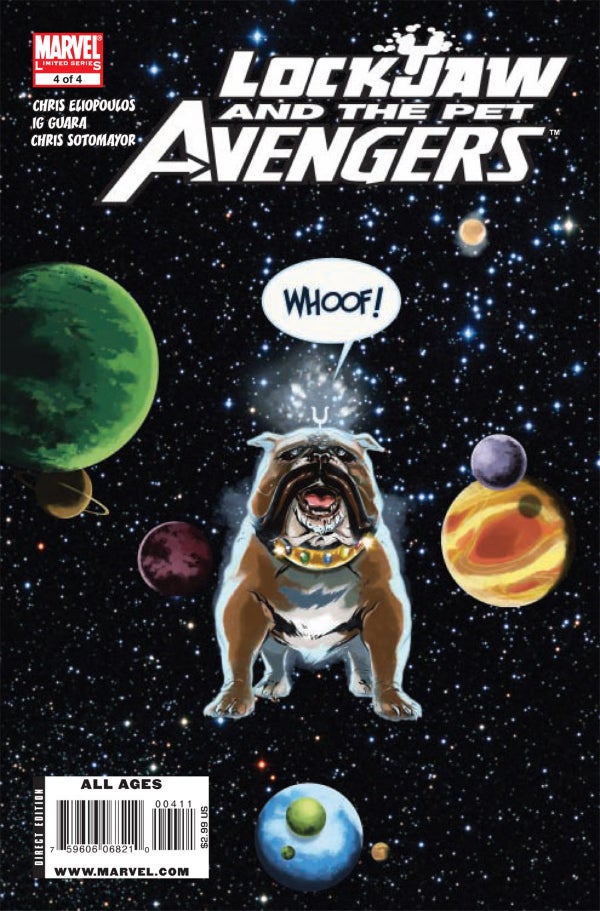
7. Lockjaw
A key member of Marvel’s enigmatic Inhuman race, Lockjaw, who resembles a giant bulldog, functions as the royal family of Attilan’s personal teleporter, taking Black Bolt, Medusa and others around the universe. While Lockjaw has been primarily used as a background/supporting character since first appearing with the rest of the Inhumans in Stan Lee and Jack Kirby’s Fantastic Four #45, he has received a few opportunities to carry a book on his own, most notably the Lockjaw and the Pet Avengers miniseries by Chris Eliopoulos, Ig Guara and Colleen Coover.
In this satirical miniseries, Lockjaw is able to successfully do what many other superheroes have failed to accomplish over the years – defeat the “Mad Titan” Thanos. The Lockjaw-led group of animal avengers secures the six gems that make up the famed Infinity Gauntlet (including receiving one gem from President Obama’s dog, Bo). They later use the gems to trap Thanos in an alternative dimension after the villain kills one of their companions, Ms. Lion (who is later resurrected via the Soul Gem).
Lockjaw and the Pet Avengers were featured in a few subsequent miniseries following the initial 2009 four-parter. And with talks of Marvel Studios wanting to produce an Inhumans film down the road, it’s only a matter of time before this oversized bulldog is depicted on the big screen.

6. We3
Grant Morrison and Frank Quitely’s three-part miniseries that follows the exploits of three animals (a dog, a cat and a rabbit) that have been fully weaponized by the government, elicits a whole gamut of emotions from its readers. But that’s to be expected from a story that is both poignant and aggressive in how it addresses major hot button political issues like animal testing and abuse.
Regardless of where one’s opinion falls on its politics, We3 is unquestionably a riveting read. In terms of characterization, Bandit (the dog), Tinker (the cat) and Pirate (the rabbit) are given a limited ability to speak by their creators, and the trio leaves behind a large trail of bodies as they make their escape from military captivity. But the pathos of the story really registers once Morrison and Quitely demonstrate how these animals are, at their core, just your average pets that have been horribly abused and disfigured – a modern day Frankenstein tale about what happens when science and technology is allowed to run unchecked. The We3 crew may not be as pop culturally recognizable as some of the other characters on this list, but they are a signature part of arguably one the most well written/crafted animal-centric stories in comic book history.

5. Gorilla Grodd
One of the only definitive villains to make this list, the telepathic Gorilla Grodd, who has spent the past 55 years terrorizing both the Barry Allen and Wally West iterations of the Flash, was created by John Broome and Carmine Infantino in 1959. After an alien spacecraft crashes into his African home, Grodd is instilled with super intelligence and constructs his home dubbed Gorilla City. Over the years he has hatched dozen of schemes to wipe humanity from existence, and has been a member of such supervillain stables as the Anti-Justice League, the Secret Society of Super Villains and the Injustice League.
In his current iteration in DC’s New 52 universe, Grodd is king of Gorilla City and eventually takes control of Allen’s hometown, Central City, declaring himself king during the Forever Evil arc.
He has appeared in countless animated series, video games and other media, and it was recently announced that he will be a featured villain in the first season of The Flash live-action television series, which debuts in the Fall.
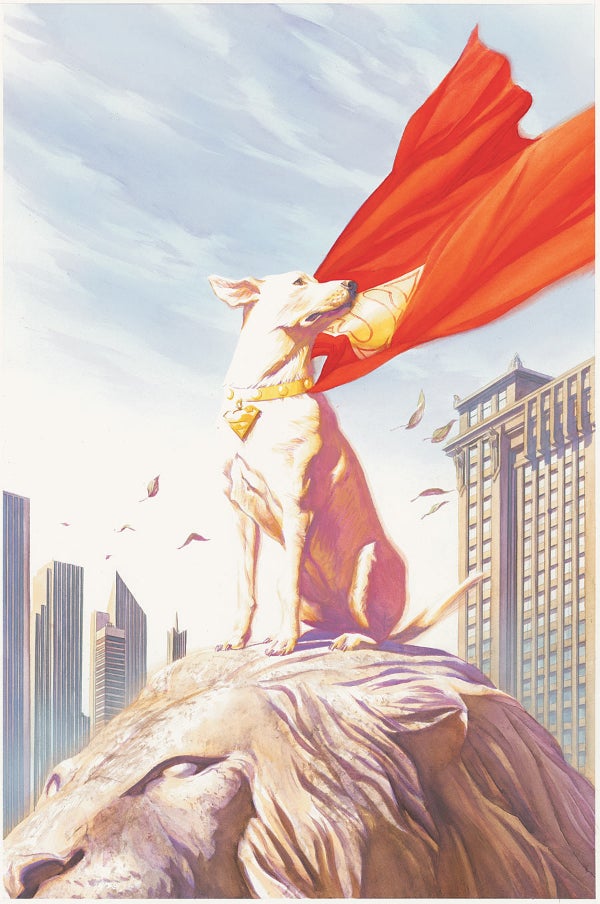
4. Krypto
Demonstrating that even Men of Steel require a loyal best friend, Krypto, or Superdog, was created in 1955 by Otto Binder and Curt Swan in Adventure Comics #210. He was originally portrayed as being Kal-El’s pet on Krypton before he was sent out on a test rocket to Earth by Superman’s father, Jor-El. When Superman and Krypto are eventually reunited, we learn that the animal has the same powerset as his Kryptonian master, except it’s proportionate to his smaller size.
As one of the most famous pets in comic book history, Krypto’s greatest moment can be found in the Alan Moore/Swan collaboration, “Whatever Happened to the Man of Tomorrow.” This epic storyline produced a tremendously heart-wrenching scene when Krypto sacrifices himself to save Superman by biting the throat and killing Kryptonite Man. As a result of his bravery, the dog becomes irradiated and dies. As an added emotional punch, before dying, Kryptonite Man expresses disbelief that an animal would sacrifice itself for a person – clearly the villain never understood the bond most people share with their beloved pets.
Krypto has continued to appear in the Post-Crisis and New 52 universes and is currently playing a role in the Batman/Superman “Doomed” arc.
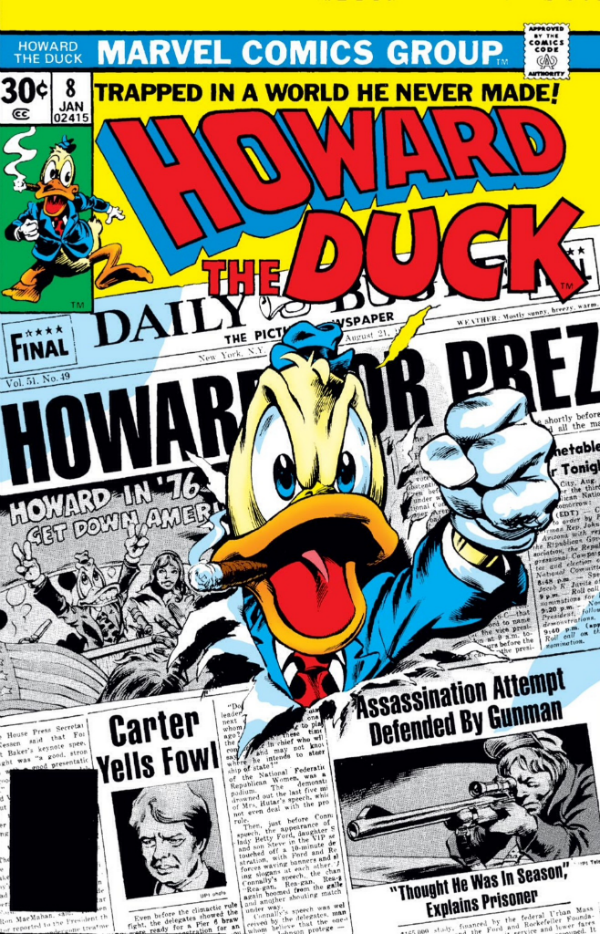
3. Howard the Duck
After his surprise cameo in a recent summer blockbuster, Howard the Duck has become a part of everyday conversation again among comic book fans and followers. So much so that his very first appearance in Adventures of Fear #19 has exploded in value in the collector’s market over the past week.
However, for fans who were there for Steve Gerber and Val Mayerik’s creation when he first debuted in the 1970s, Howard’s current popularity is nothing new. Howard was an absolute sensation in the mid-1970s, especially after Marvel started publishing the Howard the Duck series in 1976. With Gerber providing scripts, Howard the Duck featured biting social satire and commentary unlike almost anything that had ever been seen in a mainstream comic. This unique book made Howard so popular, that by the 1976 U.S. Presidential Election came around, the fictitious anthropomorphic duck from another planet received a number of write-in votes as a member of the All-Night Party. Gerber would address Howard’s presidential aspirations in the letters column of the book.
When Gerber was unceremoniously fired from Howard the Duck for missing one too many deadlines, Howard and Gerber became symbols for creator rights in the comic book industry. Gerber and Marvel eventually settled out of court, but at one point the writer collaborated with Jack Kirby to create Destroyer Duck, a not-so-subtle Howard ripoff that was used to raise legal fees.
Unfortunately, the character became synonymous with Hollywood flop when the 1986 Howard the Duck movie was lambasted by both critics and fans. Howard would go on to make sporadic appearances in Marvel comics throughout the 80s and 90s before he was eventually revived as part of a six-issue miniseries by Gerber under the MAX imprint. He also played a role in the Civil War and Fear Itself events. That brings us to today, where fans can now legitimately wonder if Howard the Duck is going to be a part of the Marvel Cinematic Universe.

2. Rocket Raccoon
Created by Bill Mantlo and Keith Giffen and first appearing in 1976’s Marvel Preview #7, Rocket Raccoon’s stock is unquestionably on the rise after being a part of the most successful August opening weekend in Hollywood history. Voiced by Bradley Cooper in Guardians of the Galaxy, Rocket was initially conceived by Mantlo and Giffen as a parody of the titular character of the Beatles song, “Rocky Raccoon.” The parody stuck during a 1982 appearance in The Incredible Hulk #271 when Rocket was chasing after a villain who stole “Gideon’s Bible” (as referenced in the song).
Beyond satire, Rocket has long been depicted as a brilliant strategist and tactician who is also very handy with a gun. He’s a key member of the modern iteration of the Guardians of the Galaxy, often being portrayed as the right-hand … er … man to Peter Quill, aka Star-Lord. Rocket has also forged a very tight bond with the Monarch from Planet X, Groot. He starred in his very own 1985 miniseries, written by Mantlo with art from Mike Mignola, and in addition to the Guardians of the Galaxy, he is currently being featured in his very own ongoing series which is written and illustrated by Skottie Young.
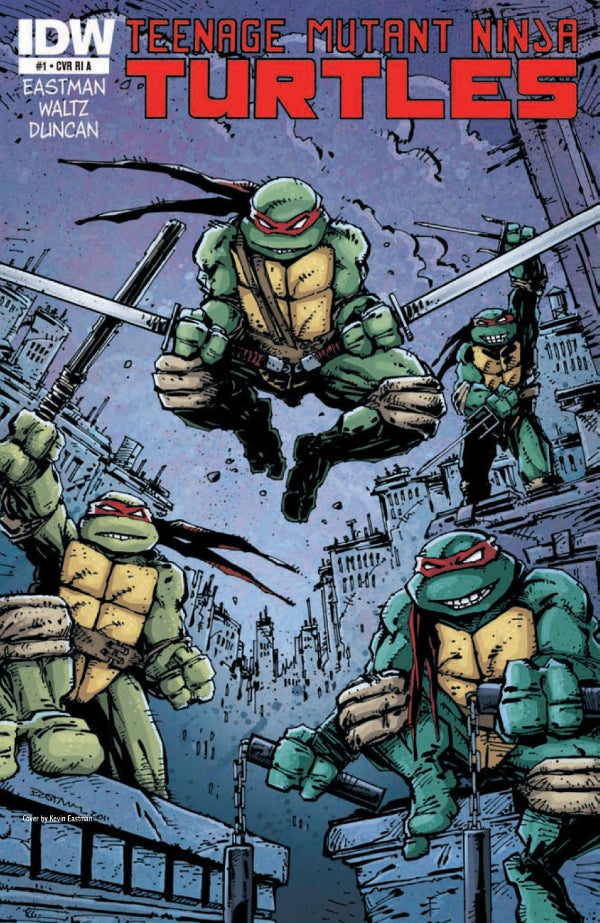
1. Teenage Mutant Ninja Turtles
It might seem a bit too coincidental to name the Teenage Mutant Ninja Turtles the greatest animals in comics the same week that a new TMNT film opened in theaters, but there’s good reason this fearsome foursome holds the top spot. For 30 years, the turtles, despite initially being created by Kevin Eastman and Peter Laird as a spoof on Frank Miller and X-Men comics, have maintained a permanent place in the pop culture zeitgeist. Granted, all of the subsequent iterations of the TMNT, whether it be the 1987 animated series, the 1990 film, the Archie Comics depiction, etc., have strayed very far from Eastman and Laird’s original source material, but popularity is popularity. Just don’t expect to find Bebop or Rocksteady anywhere in the early comics.
During the peak of the TMNT’s pop culture takeover in the late 80s/early 90s, it could be argued that Leonardo, Donatello, Michelangelo and Raphael were as recognizable as any other comic book character in history – including the likes of Batman, Superman, Spider-Man and Wolverine. In fact, the TMNT were at one point so mainstream, it’s easy to forget that they originated in the comics.
If you happen to be one of the lucky few who have a first printing copy of Eastman and Laird’s TMNT #1 – congratulations, you’re sitting on a comic that’s worth a few thousand bucks. Beyond the value, the original TMNT series is a extremely important part of comic book industry history, as its publication gave rise to independent labels, and it also ushered in the popularity of black and white comics.
Since 2011, IDW has been publishing a TMNT series anwhich includes some creative input from Eastman. The series is notable for how it mines material from almost all iterations of the characters, including the cartoons, films and the original and past comic book series.








